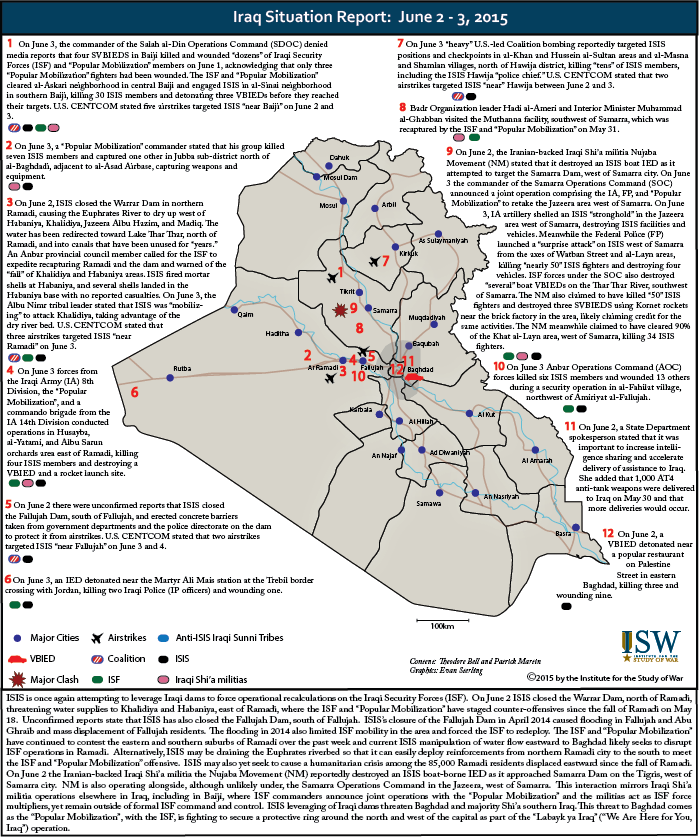Key Takeaway:
ISIS is once again attempting to leverage Iraqi dams to force operational recalculations on the Iraqi Security Forces (ISF). On June 2 ISIS closed the Warrar Dam, north of Ramadi, threatening water supplies to Khalidiya and Habaniya, east of Ramadi, where the ISF and “Popular Mobilization” have staged counter-offensives since the fall of Ramadi on May 18.
Unconfirmed reports state that ISIS has also closed the Fallujah Dam, south of Fallujah. ISIS’s closure of the Fallujah Dam in April 2014 caused flooding in Fallujah and Abu Ghraib and mass displacement of Fallujah residents. The flooding in 2014 also limited ISF mobility in the area and forced the ISF to redeploy.
The ISF and “Popular Mobilization” have continued to contest the eastern and southern suburbs of Ramadi over the past week and current ISIS manipulation of water flow eastward to Baghdad likely seeks to disrupt ISF operations in Ramadi. Alternatively, ISIS may be draining the Euphrates riverbed so that it can easily deploy reinforcements from northern Ramadi city to the south to meet the ISF and “Popular Mobilization” offensive. ISIS may also yet seek to cause a humanitarian crisis among the 85,000 Ramadi residents displaced eastward since the fall of Ramadi.
On June 2 the Iranian-backed Iraqi Shi’a militia the Nujaba Movement (NM) reportedly destroyed an ISIS boat-borne IED as it approached Samarra Dam on the Tigris, west of Samarra city. NM is also operating alongside, although unlikely under, the Samarra Operations Command in the Jazeera, west of Samarra. This interaction mirrors Iraqi Shi’a militia operations elsewhere in Iraq, including in Baiji, where ISF commanders announce joint operations with the “Popular Mobilization” and the militias act as ISF force multipliers, yet remain outside of formal ISF command and control. ISIS leveraging of Iraqi dams threaten Baghdad and majority Shi’a southern Iraq. This threat to Baghdad comes as the “Popular Mobilization”, with the ISF, is fighting to secure a protective ring around the north and west of the capital as part of the “Labayk ya Iraq” (“We Are Here for You, Iraq”) operation.
Source: Institute for the Study of War (IWS), 4. June 2015








Comment here